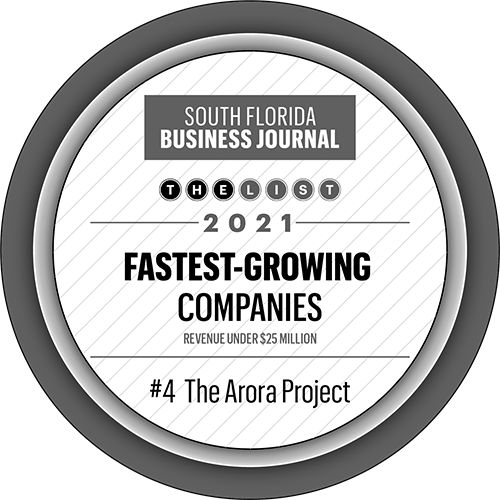“Low risk, low reward” is an industry-wide mantra for a reason. But as an investor, how do you evaluate an equity crowdfunding venture to make sure the reward is worth the risk? In today’s edition of the Arora Blog, we’re giving you all of our best tips and tricks so you can make educated decisions about risk and make your investments work for you like a pro.

$196,000,000,000
We knew that would get your attention—and that’s a good thing!
This astounding number should catch your attention…because that’s what the equity crowdfunding market is projected to be worth just three years from now.
At this point in 2022, it’s no secret there’s big money to be made by investing in startups considering the size of the market—and if you know what to look for, the returns could far outstrip the inherent risk to investing in startups.
But before we talk about the fun stuff (like the fact that a world-changing startup just raised the yearly maximum of $5,000,000 FROM ONE CAMPAIGN), we would be remiss if we didn’t talk about risk.
You Can’t Avoid Risk in Equity Crowdfunding
Repeat after us: EVERY INVESTMENT HAS RISK.
Even the most stable stocks and carefully considered money moves still have an element of risk to them, because it’s impossible to predict the future. This is true for everyone!
But savvy investors and founders alike know a few immutable facts:
- While risks are inevitable, they can be calculated and conscientious rather than impulsive and reckless
- It’s possible to minimize potential future issues while also making aggressive investing moves
- The most ambitious companies are often the riskiest
But You Can Balance Risk as an Investor
And here’s the first three steps…
Assess Business Operations
One of the biggest and most important risks a startup must take is expansion. A great first step is to evaluate the startup’s success in its home state. If it’s already operating on a national level, consider its relevance to international markets—not all ideas that work in the US will succeed elsewhere.
Consider the Company’s Growth Prospects
Startups pursuing hypergrowth have the potential for massive investment returns, but rapid scaling can unmask other issues if founders aren’t cautious.
Determine Whether the Company is Seeking (enough) Customer Feedback
Many founders launch ventures because they’re frustrated by their own experience, and expanding on this experience by welcoming feedback from their community is essential. Learning what potential customers think can be as easy as asking for their opinions on social media, so be wary of a startup that isn’t constantly collecting data to improve their product or service.
Big Risks Can Bring Big Rewards
Startups taking the right risks can bring massive rewards for equity investors. These startups think big, eschew incremental change, and pursue disruption.
Consider Cruise Automation. The company’s series A and B rounds each involved crowdfunding and raised $100,000. Several rounds and traditional venture capital investment later, Cruise Automation was snapped up by GM for a whopping $1 billion. It was the first billion-dollar exit of a company with equity crowdfunding backing. And more huge exits—and payouts—have followed.
Another way investors profit from their educated investments is through dividends paid when startups are successful. This takes time, but patient investors could be highly rewarded. Take Thankyou Payroll, for instance. Three years after raising $460,000 in an equity crowdfunding campaign, the company began to pay out dividends to its investors and reported 120% year-over-year growth. Not bad for the 186 early equity crowdfunding investors!
Consider the Five M’s of Investing
Too much caution and hedging will leave investors empty-handed, but so will too much risk. So what are major things to look for when evaluating an investment opportunity? The five M’s of investing provide a solid guide:
Management
A team with proven experience shows backers that they understand the industry or startup landscape, can power through challenges, and navigate uncertainty. Passionate teams and leaders with grit, and teams with a history of working well together—these are ones to take notice of.
Market/Money
Top-down and bottom-up approaches give investors a strong idea of a startup’s market, as well as its potential for success with customers and with the problem it’s trying to solve. For a top-down look, evaluate the market size, trends, and competition and how the startup is tackling them. A bottom-up approach involves focusing on the needs of customers and the characteristics of the startup.
Model
A business model that turns a traditional industry on its head is certainly attention-grabbing but requires diving into it a bit to understand the risks involved. Savvy investors and founders know their success depends on a unique selling point and that an innovative model is key to future success. Look at whether founders truly understand the intricacies of their industry and whether they can create sustainable value and income.
Motivation
Founders’ whys need to be clear to make an impact on their market, customers, and investors. Is the technology finally right to address the target problem? Are customers clamoring for a better way to address their pain points? Investors who walk away unsure of a teams’ motivation may want to dig a little deeper into the venture.
Momentum/Metrics
Intellectual property ownership, growth data and projections demonstrate that founders have begun to validate their idea. Other metrics to consider that can be predictors of success include number of existing customers, conversion rate and pricing.
Understand Your Risk Tolerance
We think that equity crowdfunding is an incredible way to dip your toe into investing. But we also think it’s important to understand your risk tolerance as an investor before making those moves—especially if you have a volatile relationship with money. Getting a clear idea of your risk tolerance before investing is essential.
Ask yourself the following questions, and answer honestly:
- Are you risking your financial stability in order to invest?
- Would losing $100 to a bad investment be detrimental to your financial future? How about $1,000?
- What can you actually afford to lose?
- What are your money goals now and for the future?
- Do you fully understand what you’re investing in?
- Do you fully understand the platform you’re investing through?
- What happens to your money after it leaves your bank account?
- Can your present financial situation handle risky investments, such as those in the equity crowdfunding space?
- How long do you plan to hold this investment?
- Are you prepared to wait years before seeing a return?
*The Arora Project editorial team does not moonlight as financial advisors. Take our advice at your own risk.
The Bottom Line
Even the most experienced investors can’t avoid risk. But with the right knowledge, you can ensure you’re making the best possible decisions. Remember, without a little risk, you’ll never know the major rewards.
Numerous ventures are waiting for investments, and their campaigns are live now and growing fast. You could be an early investor in the next big thing.
Are you a founder with a potentially-risky venture? Do you want to start crowdfunding, but you’re worried investors might think your risks outweigh your rewards? Partner with Arora Project and let our team of creative professionals paint your campaign in its best light.








